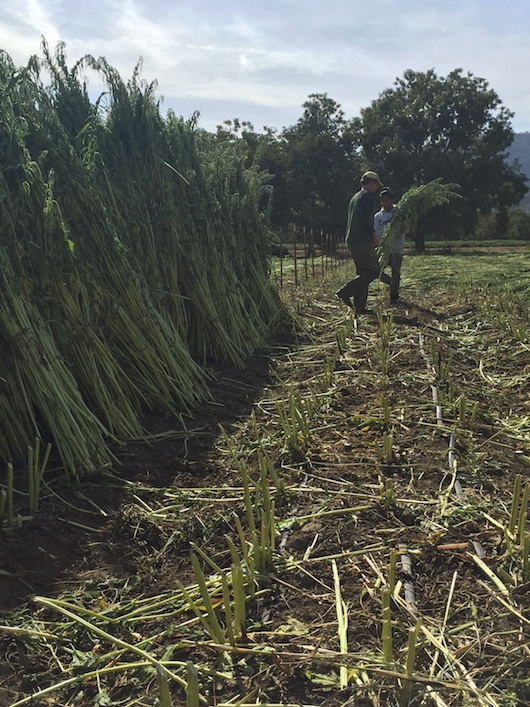
Full Belly Farm has a lot of balls in the air — we grow fruits, vegetables, nuts and flowers, plus we have several groups of egg-laying chickens and a herd of sheep circulating around the farm. The veggies run from whimsical and exciting experiments growing sesame and garbanzo beans, to the top flight crops like tomatoes (encompassing at least 15 different varieties), melons and watermelons (ditto – lots of varieties), flowers (even MORE varieties) and potatoes… Sometimes the production crew sits down and tries to agree on a few crops that we don’t need to include any more, but everything is someone’s favorite, and who knows, an experiment this year could be next year’s blockbuster!
The diversity is layered across the farm — there are multiple plantings of tomatoes in different fields, not just one big summer planting. There are some fields that have 15 different crops growing side by side, and hedgerows or pollinator plants interspersed between. This year, deer jumped our fences and ate some of our favorite crops, but in many cases we had those same crops growing in neighboring fields (not so in the case of our okra, so sad). The diversity results in a more beautiful landscape; a more interesting and delightful palate of foods to learn to cook and eat; and hopefully a more varied diet for our CSA members (more than 40 different fruits and vegetables during the year).
One of the operational results of growing so many different things is that it can be difficult to keep close track of the number of acres and total yields of some of our crops. Crop acreage and yield are the stock-in-trade of most serious farmers, and increasingly this information is required by various government agencies, although I really can’t imagine that they care about our tiny line of pineapple guava or the acreage and yield from the quince trees that you can count in short order (actually, they might tell you that they do care…)

I’ve been thinking about ways to keep track, and with the help of several of our interns, we mapped the 15 different ‘blocks’ and 50 different fields that we call Full Belly Farm. The resulting maps are interesting, so we are including one for you, our readers.
—Judith Redmond
